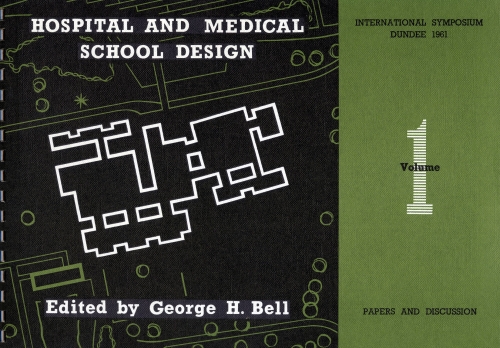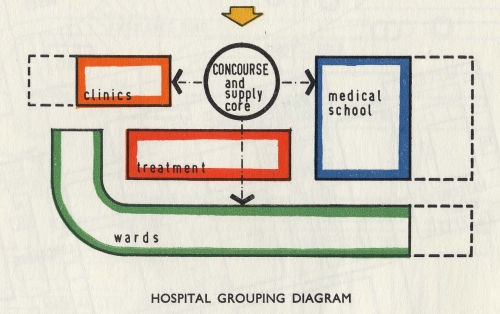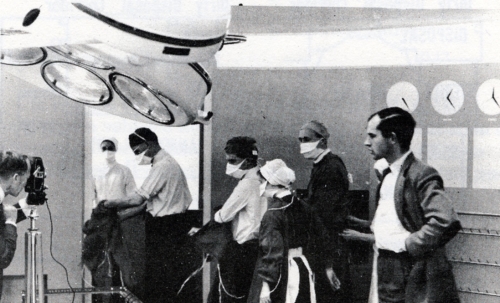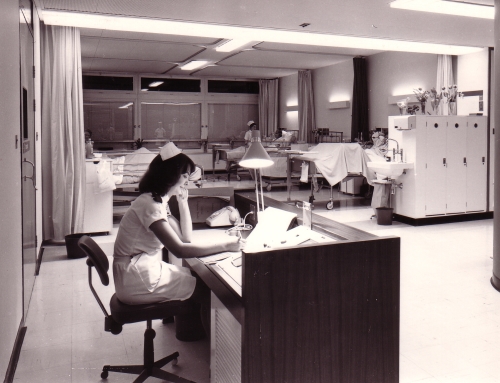Ninewells 1974-2014
Pioneering Design
Ninewells was the first completely new teaching hospital built in the UK since the 19th century. This gave the designers freedom to explore some radical new ideas. A large scale model was built, and £50,000 spent on mock-ups to test certain key areas of planning and design. These proved to be immensely valuable to both the client and architect. The scheme was so ambitious it attracted attention from all over the world. The International Hospital Federation described it after their visit as the “Jewel in the Scottish Hospital Crown”.
Image above: To explore different ideas prior to construction, a major international conference on hospital design was held at the University in 1961 (Tayside Medical History Museum collection)
Image above: The widely held theory of hospital planning at the time was of a multi-storey block of wards on top of a low-spreading diagnostic and treatment building. At Ninewells, an alternative concept of a mainly low group of buildings to help ease of movement, face-to-face contact and future expansion was put forward by the architects. (Tayside Medical History Museum collection)
Image above: The slope of the site was used to aid separation of internal traffic, each level having its distinct point of access on the north side. Thus the wards were located on the quiet south and west aspects to minimise noise and maximise light. The concourse at the heart of the hospital allowed direct access to both clinics and medical school. (Tayside Medical History Museum collection)
Image above: Professor Sir Donald Douglas testing out the mock-up operating theatre. The traditional twin-theatre arrangement was rejected for reasons of cross-infection, each theatre being provided with its own ancillary accommodation with separate 'clean' and 'dirty' access and viewing galleries. (courtesy of NHS Tayside)
Image above: The ward unit was designed to give patients some degree of seclusion, in particular to minimise ward traffic for the most ill patients in the first bay. The high ceilings and through ventilation of traditional wards was replaced by positive extract ventilation from the central core of each ward. (courtesy of NHS Tayside)




